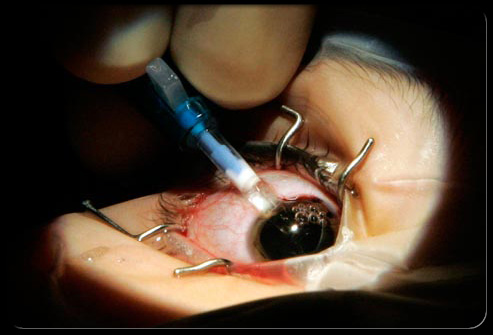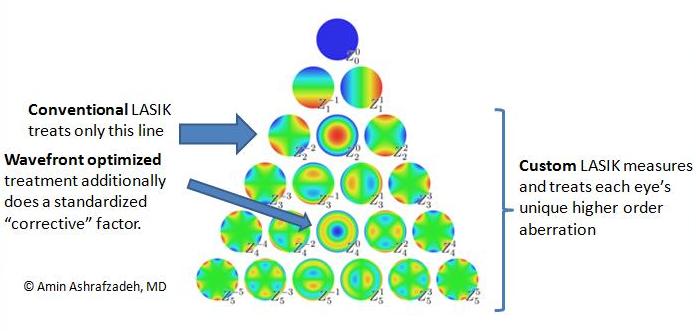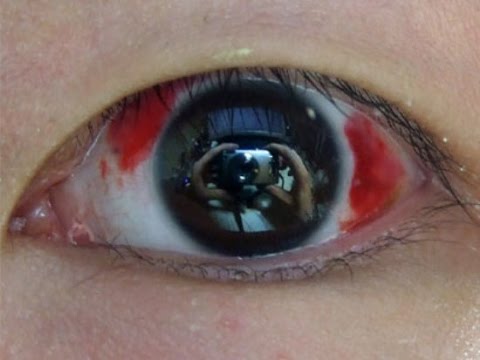LASIK stands for “Laser-Assisted In Situ Keratomileusis”, an excellent safety profile eye surgery that has achieved high success rate. It is designed to treat myopia, astigmatism and hyperopia and makes you live freely without the aid of contact lenses or eyeglasses. During LASIK surgery, a sophisticated type of laser is used to change the shape of the cornea, and thus, vision problem is rectified. This surgery is not suitable for everyone especially those with certain health problems, eye disorders, and other conditions. It requires careful evaluation and consultation before going through the procedure.

Now-a-days, more and more people are opting for LASIK to correct their vision as it reduces the need for eyewear completely and also treats vision problems. Before you have a surgery, as part of your surgical consultation, your medication, refraction errors and health histories are screened thoroughly and reviewed to find out the appropriateness for LASIK treatment. Any one type of LASIK surgery may suit you that will be decided upon by your eye care specialist. Know your suitable surgery type and go for the treatment. This helps you to reduce the risks and complications of LASIK eye surgery. Here is a lot of information for you about LASIK surgery. Read out each and every point to protect your precious eyes.
Different Types of LASIK Surgeries
LASIK eye surgery alters the shape of an eye and improves your vision as an alternative to wearing contact lenses or glasses. Almost all LASIK procedures are performed with a specific type of excimer laser that comes in different brands such as Bausch and Lomb, Alcon, Visx, and Wavelight. There are four types of LASIK eye surgeries.
- Conventional LASIK: It is the ablation pattern that is available on most lasers to treat the problem directly based upon the patient’s eyeglass prescription with fixed therapeutic parameters. This LASIK treatment is effective for most of the patients but at times it can result in more visual aberrations like halos, glare and night vision issues.
- Wave front-Optimized LASIK: It is a type of LASIK treatment that is performed using a wave-light It is also based on the patient’s glass prescription and accounts corneal curvature and thickness. This treatment has been found to reduce the complications such as nighttime visual aberrations that occur with conventional treatment.
- Wavefront Guided LASIK: It is also referred to as custom LASIK or wavefront A patient’s underlying refractive error and specific alterations in a patient’s eye can be treated well with this surgery. Before starting the procedure, individual mapping is performed to identify any irregularities in the patient’s optical system.
- PRK: It stands for photorefractive keratectomy and is used to correct mild to moderate short-sightedness, long-sightedness, and During PRK surgery, an eye surgeon uses a special laser to reshape the cornea that delivers a cool pulsing beam of UV light.
- LASEK: It stands for Laser Epithelial Keratomileusis. This is a new form of laser eye surgery that combines many benefits of LASIK and PRK. There is no cutting or scraping of the eye. This surgery is used to treat short-sightedness, long-sightedness, and astigmatism.
LASIK Eye Surgery Risk Factors
LASIK surgery has very specific potential risks that patients should consider before undergoing this procedure. Certain anatomical factors and eye conditions can increase your risk of limiting maximum LASIK results. Generally, your risks will vary with the degree of correction and surgical procedures, your general health, and your age. The risk factors for LASIK eye surgery include:
- Large Pupils
- Unstable Vision
- Dry eyes
- High refractive error
- If you are pregnant women
- If you have active autoimmune disorders or degenerative diseases
- Too thin or irregular corneas
- Corneal scarring
- Fuzziness
LASIK Treatment Complications and Side Effects
Most of the Americans have had LASIK eye surgery to correct their vision since it was introduced in the United States more than 20 years ago. LASIK surgeons reported that severe complication rates could be below 1 percent. The side effects and complications of LASIK can be resolved with the assistance of advanced medical treatment or additional enhancement surgical procedures. Check out the list of common LASIK complications and side effects.

Temporary vision disturbances and discomfort
Discomfort such as mild irritation and light sensitivity, during the first few days after LASIK surgery, is quite common and can be expected too. During the first few weeks or months, you may experience glare, halos, dry eye symptoms, hazy vision and starbursts in low light regions especially at night time. In most of the cases, this complication is temporary and disappears entirely within 3 to 6 months.
Flap Complications
The LASIK treatment involves the development of a thin hinged flap on the front surface of the cornea. This is lifted up during surgery for laser reshaping of the eye. Later the flap is replaced to form a natural bandage. If the LASIK flap is not corrected properly, then this complication can lead to an irregular shaped eye surface and distorted vision. Some problems like irregular astigmatism, DLK, keratoconus, epithelial ingrowth are associated with LASIK flap complications.
Irregular astigmatism
It is caused by an unequally curved corneal surface and can occur from laser correction that is not centered appropriately on the eye or from irregular healing ability. Resulting symptoms include double vision or ghost images.
Diffuse Lamellar Keratitis (DLK)
This is an inflammation under the LASIK flap that possesses many causes. In case of DLK, it can interfere with healing and cause loss of vision. During this condition, it responds to medical therapies such as topical steroids and antibiotics. The flap must be lifted and cleaned for removal of inflammatory cells. This in turn prevents the tissue damage.
Epithelial Ingrowth
When the cells from the outer layer of the cornea grow under the flap after LASIK surgery, it causes epithelial ingrowth. In most of the cases, this condition is self-limiting and causes very few problems. But in rare cases, symptoms of discomfort and blurred vision can occur. Additional surgery is required to remove the epithelial cells.
Keratoconus or Keratectasia
It is a very uncommon bulging of the eye’s surface that occurs due to the removal of the corneal tissue during LASIK. In rare cases, keratoconus develops after LASIK treatment with unknown risk factors.
Experience of dry eyes after LASIK
Some people who have undergone the LASIK surgery experience a decline in tear production that causes eye discomfort and blurred vision. Almost all LASIK patients experience a certain degree of temporary dry eye syndrome. It is a temporary condition and can be treated effectively with lubricating eye drops or other measures.
Overcorrection, Undercorrection or Regression
Not everyone will attain 20/20 vision after LASIK eye surgery. In most of the cases, the cause of a less than perfect outcome is that your eyes fail to respond to laser eye surgery in an anticipated manner. Another cause is that your vision may be maximum at first but regress over time due to the overhealing property. In most cases, undercorrection or regression can be treated with refractive surgery such as conductive keratoplasty.
Eye infection: LASIK surgeons report that eye infections occur more commonly with surface ablations such as PRK. Eye infections after LASIK eye surgery are temporary and can be treated with antibiotic eye drops or anti-inflammatory medication such as steroids.
7 Key Facts to Know About LASIK surgery
LASIK is one of the most advanced technological eye operation in almost all parts of the world. In order to reduce the risks and complication factors of LASIK, check out these seven important points before you undergo surgery.
- Determine your refractive error
- Know your suitable treatment options
- Know about the laser type that is recommended for your treatment and also know why it is specially chosen for you
- Know whether you are a suitable candidate for LASIK surgery
- Select an experienced and certified surgeon for your treatment
- Deal with your post-surgical care
- Know the statistical analysis of risks and complications of LASIK
Like any other surgery, there will be potential risks, side effects and limitations that you should be fully aware of before opting to undergo any type of procedure. A skilled and experienced LASIK eye surgeon can reduce these risks and enable you to achieve the best results with LASIK eye surgery.
Image Credits: i.ytimg.com, Amin Ashrafzadeh
